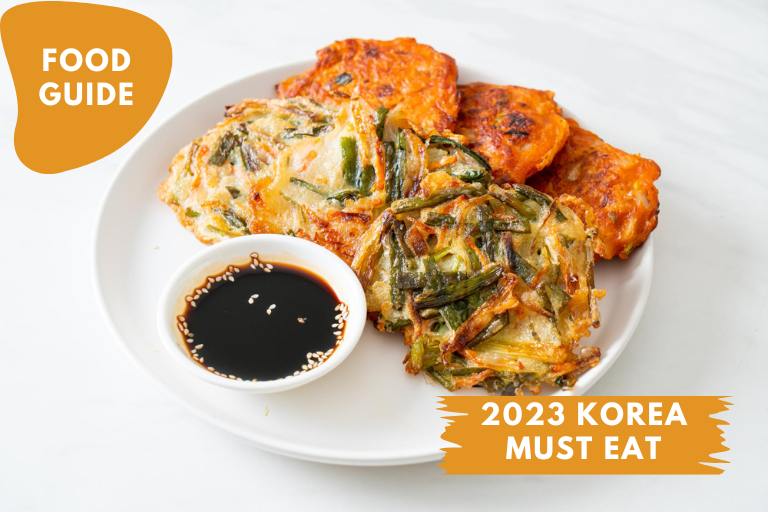In Korea, traditional holidays bring families together to prepare special dishes for ancestral ceremonies, each dish carrying symbolic meanings such as happiness, longevity, or financial success. To truly experience Korean holidays, consider making one of these signature Korean dishes and sharing it with your family!
Content
Iconic Korean Food #1: Tteokguk
Iconic Korean Food #2: Mandu
Iconic Korean Food #3: Jeon
Iconic Korean Food #4: Songpyeon
Iconic Korean Food #5: Japchae
Iconic Korean Food #1: Tteokguk
On Seollal morning, Koreans celebrate by making a wish for the New Year, honoring their elders, and enjoying tteokguk (sliced rice cake soup). The soup features thin rice cake slices boiled in a beef broth, garnished with eggs and seaweed flakes.

It symbolizes starting the New Year with a fresh beginning (white rice cakes), longevity (long rice cake stick), and prosperity (round rice cake slices). In Korean tradition, eating a bowl of tteokguk signifies getting a year older.
Iconic Korean Food #2: Mandu
Mandu are dumplings with various fillings such as meat, vegetables, or kimchi, enclosed in a flour-based shell. They can be boiled, steamed, fried, or added to soups. During Seollal, many families include mandu in their tteokguk (sliced rice cake soup), symbolizing a peaceful new year.

Try mandu specialties like the hearty mandu soup from Jaha Sonmandu in Seoul, plump kimchi mandu from Wonju Kimchi Mandu, or flat mandu with glass noodles and chives from Miseongdang in Daegu.
Iconic Korean Food #3: Jeon
Jeon is a savory pancake made by coating various ingredients with a light flour batter and frying them in oil. Different ingredients create distinct flavors. During Korean holidays, you'll often find kimchi jeon (kimchi pancake), haemul pajeon (seafood and green onion pancake), gogi wanja jeon (pan-fried battered meat balls), kkochi jeon (pancake skewers), and gamja jeon (potato pancake).

For a delightful jeon experience outside of holidays, head to specialty streets like Hoegi Station Pajeon Street or Mapo Jeon Street in Seoul.
Iconic Korean Food #4: Songpyeon
During Chuseok, Koreans enjoy songpyeon, a type of rice cake made with freshly harvested rice and filled with beans, red beans, sesame, or chestnuts. Families traditionally made these rice cakes together, sharing well-wishes and bonding over the process.

Today, many families buy pre-made songpyeon. The cakes, steamed over pine needles, carry a distinctive aroma and symbolize gratitude for the year's harvest, placed on the ancestral rites table as an offering."
Iconic Korean Food #5: Japchae
Japchae, a popular holiday dish, combines vegetables, meat, mushrooms, and glass noodles stir-fried in a soy sauce-based marinade.

The ingredients are fried separately and mixed, creating a flavorful combination. Parents often prepare japchae, while eager children wait for a taste of this delicious treat.
fter learning about these traditional Korean foods, are you feeling the urge to taste the authentic culinary delights of Korea? If you're intrigued, why not start planning your trip to Korea right away! And of course, don't forget to purchase the Korean eSIM plan, ensuring you have uninterrupted connectivity throughout your journey in Korea!


